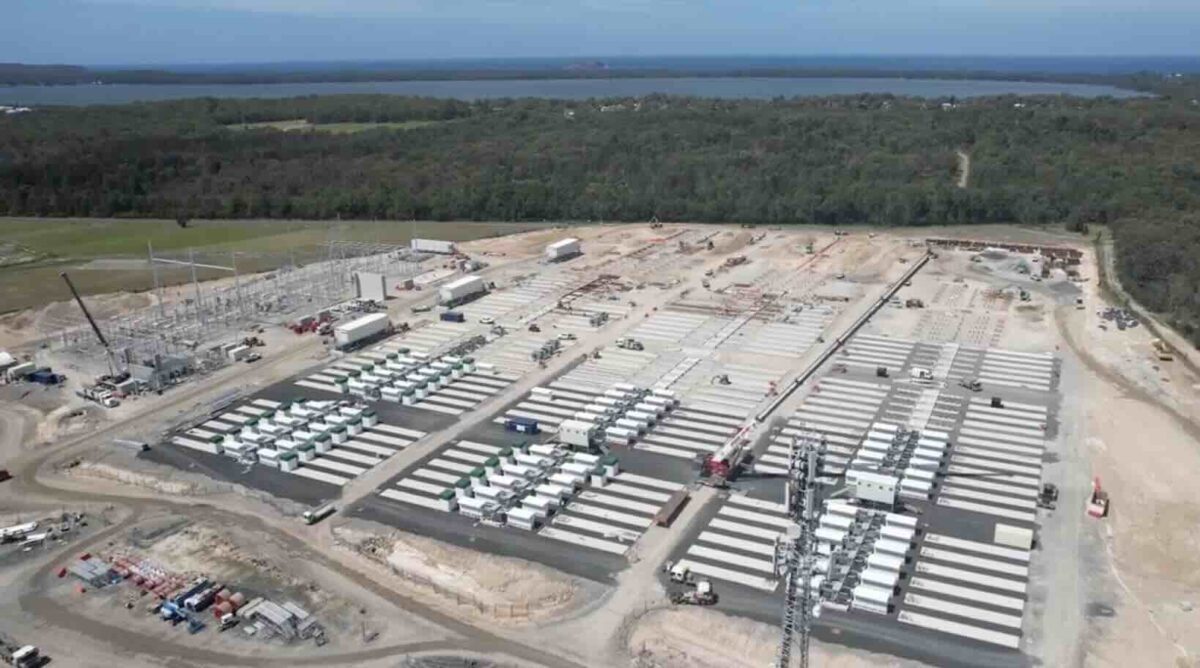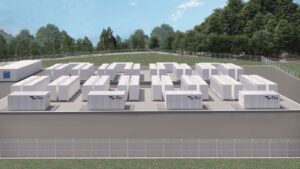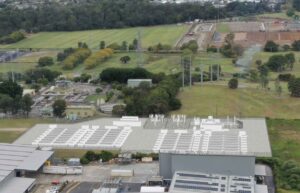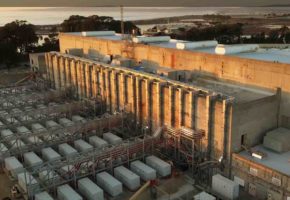The giant Waratah Super Battery that will help fill the gap created by the anticipated closure of the country’s biggest coal generator appears set to be commissioned on schedule after receiving the technical green light from the market operator.
The battery owner Akaysha Energy says the 850 MW, 1680 MWh Waratah battery – which will be the biggest in the country when complete in August next year – has been granted Generator Performance Standard (GPS) approval by the Australian Energy Market Operator (AEMO).
That GPS is a critical element for getting the battery on the grid in good time, as difficulties over GPS approvals have been responsible for lengthy delays at other new projects, including some big batteries.
The Waratah Super Battery is being built at the site of the shuttered Munmorah coal fired generator on the central coast of NSW, and will play a critical role as a “shock absorber” for the grid, essentially allowing the transmission lines delivering power to the major load centres to operate at much greater capacity.
That will be crucial as NSW prepares for a grid without the 2,880 MW Eraring power station, although there is speculation that at least some units might be kept open – at least for another couple of summers – as added insurance against power shortages and price hikes.
Akaysha Energy CEO Nick Carter says the GPS approval is the first for a battery energy storage project of its size in Australia, and will pave the way forward for other “super batteries” to be built in Australia’s main grid.
He says the GPS approval eliminates one of the most substantial technical barriers for the project, allowing it to participate in the growing energy storage market in Australia.
“It’s been more than 12 months’ worth of hard effort by the team and AEMO and Transgrid and our consultants Aurecon on this,” Carter said in a statement.
“We appreciate the collaboration with eks Energy and Powin. Their commitment to providing local on-ground support in Australia, advanced technology and willingness to work closely with our interconnection partners was critical in securing GPS approval and achieving closure within the required timeframes.
“Connecting energy projects to the Australian grid poses unique challenges due to stringent interconnection standards resulting from a combination of an inherently weak electrical grid, strict performance requirements and high renewable energy penetration.
“The significance is that we now have a clear pathway to get the battery connected.” He says the project is on track to be fully operational by August 2025, although it is likely to be connected to the grid later this year.
Andrew Kingsmill, the executive director of network planning and technical advisory at EnergyCo, which is responsible for the developer, says the GPS approval means the project has passed the simulations “needed to know that it can successfully connect to the grid later this year.”
Akaysha’s Carter says the Waratah battery will be the biggest single unit to be connected to Australia’s main grid, and will play a key role to ensure “the lights stay on in a whole range of different circumstances” and that more wind and solar can get connected reliably and “can get its energy to the load centres.”
Carter says connecting new assets in Australia is a hard, challenging process because of the “stringy” network.
“The GPS is important to maintaining system security and making sure you are not doing anything silly to impact the network,” he says. “In australia we possibly have the harshest GPS standards in the world” because of the nature of the network, the increase in wind and solar, and the exit of coal and other thermal generators.










